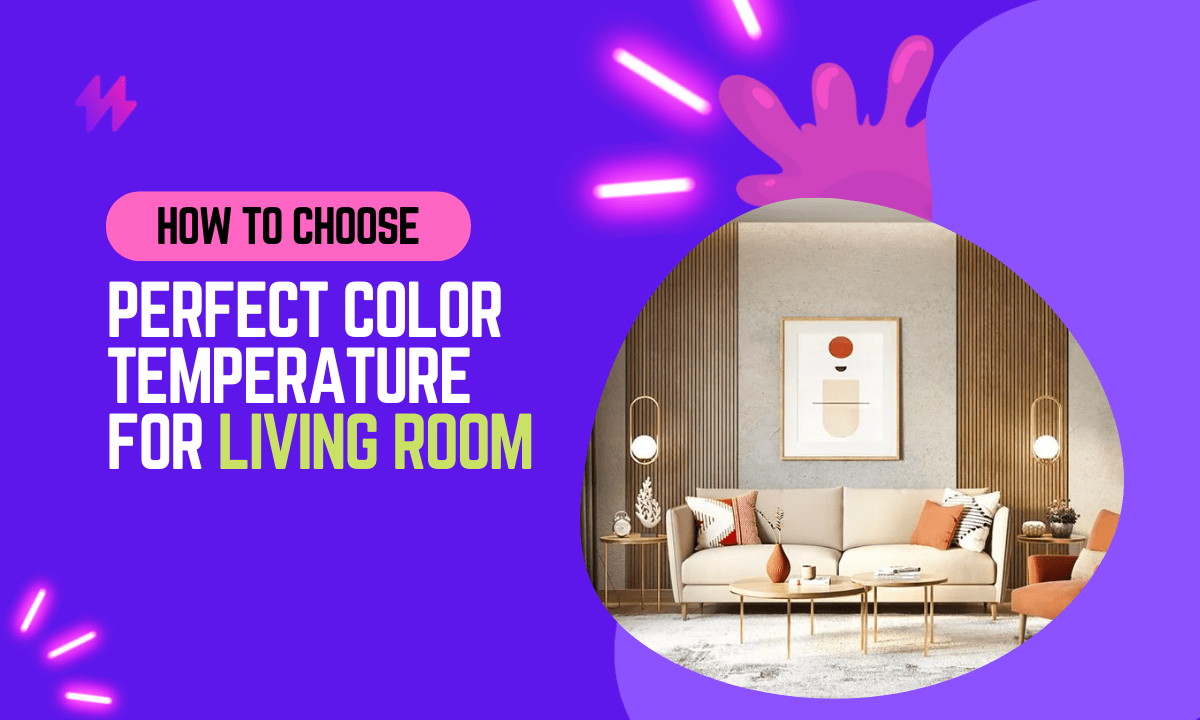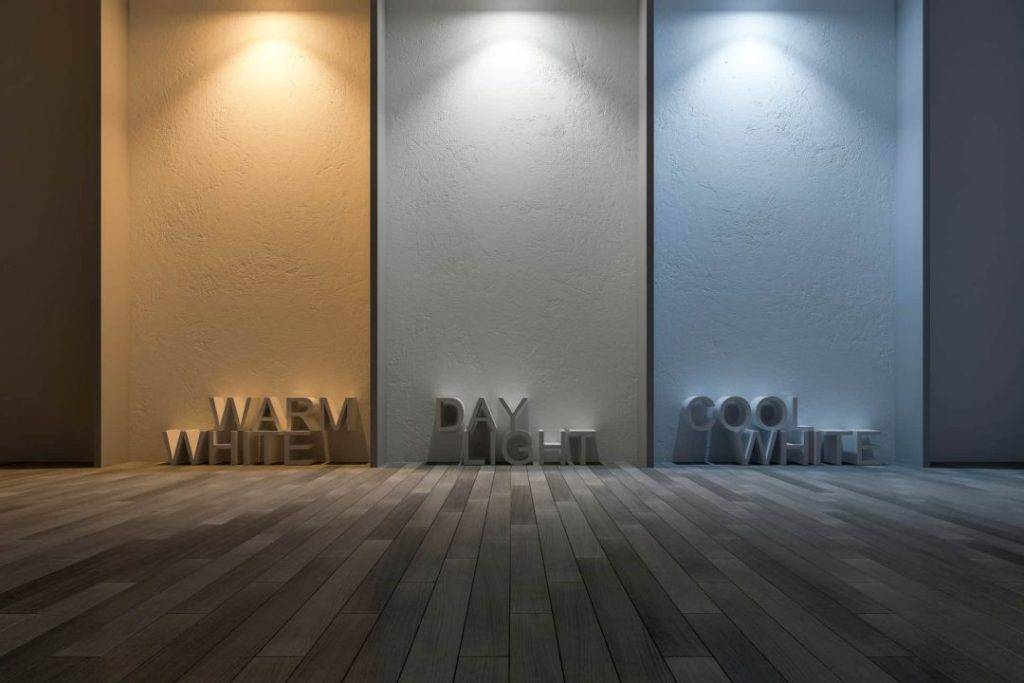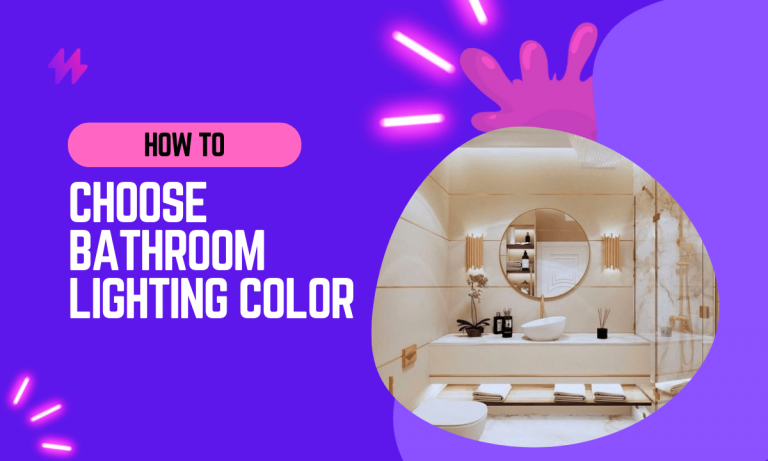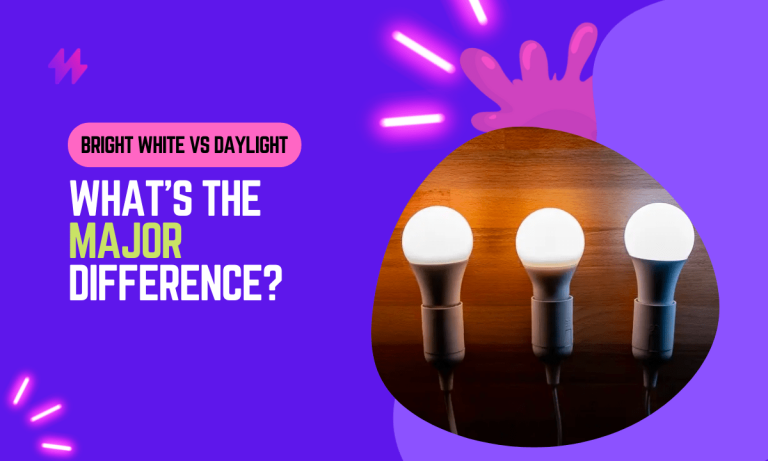How to Choose Color Temperature for Living Room in 2023

It’s not hard to understand the appeal of a well-lit living room. After all, who doesn’t love spending time in a bright and cheerful space? But if your goal is to create an inviting and relaxing environment, it’s important to choose the right color temperature for your living room.
So what is the best color temperature for living room? And how do you go about choosing it? In this article, we’ll take a look at different types of color temperatures, and we’ll provide some tips for choosing the right one for your home.
What is the best Color Temperature for living room?
The best color temperature for the living room should be 3300 Kelvins. This color temperature is achieved by using either a full-spectrum white light or an incandescent light. It represents the optimal level of brightness and warmth for living room lighting.
At this color temperature, your living room will be bright enough to read and work in, but it will also have a warm and inviting atmosphere. This is the ideal balance for many people, and it’s why 3300 Kelvins is often considered the best color temperature for living room lighting.
Must read: Soft white vs Daylight Lighting
Types of Color Temperature

There are three main types of color temperature: warm, cool, and daylight. Each has its own unique feel, and each is better suited for certain tasks or activities.
Warm: Warm colors have a yellow or orange tint to them. They’re often used in living rooms and bedrooms, as they create a cozy and intimate atmosphere.
Cool: Cool colors have a blue or green tint to them. They’re often used in kitchens and bathrooms, as they create a refreshing and energizing atmosphere.
Daylight: Daylight colors are closest to natural sunlight. They’re often used in offices and other workspaces, as they provide a clear and bright light that helps people focus.
You may also like: How to choose Kitchen Color temperature
How to Choose the Right Color Temperature for Your Living Room
When choosing the right color temperature for your living room, it’s important to consider various factors. These include the size of the room, the type of furniture, the color of the walls, and the overall atmosphere you’re trying to create.
Size of Room
The size of your living room will play a role in how bright it can be. If you have a large living room, you’ll likely be able to go with a higher color temperature without it feeling too harsh. However, if you have a small living room, you may want to stick with a lower color temperature to avoid overwhelming the space.
Also read: How to Choose Kid’s Room Lighting Color
Type of Furniture
The type of furniture in your living room will also play a role in choosing the right color temperature. If you have dark-colored furniture, you may want to go with a warmer color temperature to balance it out. Conversely, if you have light-colored furniture, you may want to go with a cooler color temperature.
Color of Walls
The color of your walls will also affect the feel of the room. If you have white walls, you’ll likely be able to go with a higher color temperature without it feeling too harsh. However, if you have dark-colored walls, you may want a lower color temperature to avoid overwhelming the space.
Overall Atmosphere
Finally, when choosing the right color temperature for your living room, it’s important to consider the overall atmosphere you’re trying to create. If you want a warm and cozy atmosphere, you’ll likely want to go with a warmer color temperature (2700K – 3000K). Conversely, if you want a refreshing and energizing atmosphere, you’ll likely want to go with a cooler color temperature (3000K – 4000K).
When it comes to choosing the best color temperature for living room, there is no one-size-fits-all answer. It’s important to consider the various factors discussed above, and then make a decision based on what you feel is best for your space. With a little trial and error, you should be able to find the perfect color temperature for your needs.
As you can see, there are many factors to consider when choosing the best color temperature for living room. However, by taking into account the size of the room, the type of furniture, the color of the walls, and the overall atmosphere you’re trying to create, you should be able to find the perfect balance for your space.
Conclusion
In conclusion, choosing the right color temperature for living room lighting in 2023 is crucial for creating an inviting and functional space that aligns with modern living standards and aesthetic preferences. The color temperature of a light bulb is measured in Kelvin (K) and can greatly affect the mood and usability of a room. For living rooms, where people relax and entertain, selecting a color temperature that promotes a warm, welcoming atmosphere is key. Typically, warmer light temperatures ranging from 2700K to 3000K are ideal as they emit a soft, cozy glow that enhances comfort and relaxation. These warmer tones are reminiscent of sunset hues, which naturally help people unwind and feel at ease in the evenings.
Moreover, with the advancement of smart home technologies, homeowners now have the flexibility to choose adjustable color temperature lighting that can be changed according to different needs and times of day. For instance, brighter and cooler temperatures (3500K to 5000K) during the day can energize the space and improve visibility for reading or working. In contrast, softer, warmer lights can be reintroduced in the evening to facilitate relaxation and social interactions. Integrating lighting solutions that offer variability in color temperature not only enhances the functionality of the living room but also contributes to energy efficiency and personal well-being. By considering these factors, homeowners can make informed decisions that enhance the aesthetic appeal and practicality of their living room, making it a versatile space suited to a variety of activities and moods throughout the day.






